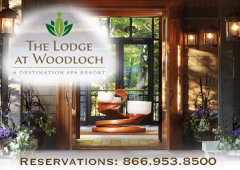CASTLES ON THE LOIRE
A Fascination with a Beautiful History Realized
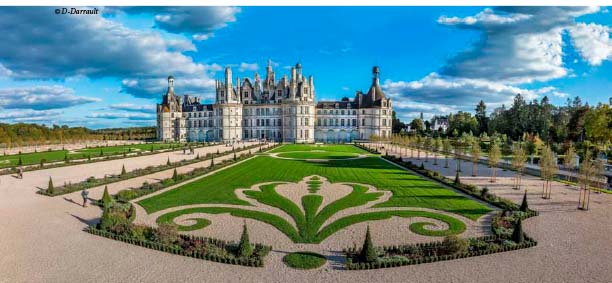
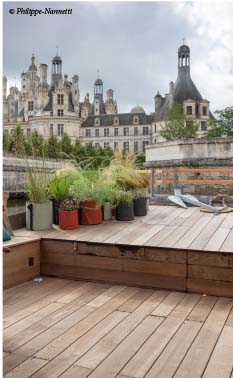
Apicture book called The Châteaux of the Loire I love first lured me to the Loire Valley, in 1976; my grand-niece’s fascination with castles inspired our recent add-on trip, there, from Paris.
I booked tickets for the 68-minute high-speed Trains à Grande Vitesse (TGV) via Rail Europe from Gare Montparnasse to Saint Pierre-des-Corps, outside Tours, where we picked up a Citroën rental car. Our subsequent four-day castle-to-castle drive included visits to chateaux and strolls through the adjacent towns that date from the feudal era, where we sampled local cheese, sipped Vouvray and savored macarons. Each mid-afternoon, we checked into one of the three best hotels along the eastern region of the Val de Loire, where we relished spa treatments, dinners and overnight stays.
CHÂTEAU ROYAL D’AMBOISE
From the train, we headed towards Amboise and Château Royal d’Amboise, a medieval fortress which Charles VII transformed into a 15th century Renaissance palace. This bird-lovers paradise is launching its first overnight bivouac in summer 2025 that will include dinner and a nocturnal garden exploration. Just a fifteen-minute walk from the palace, visitors reach the Château Clos du Lucé, where Leonardo da Vinci spent his last years and is buried in the little, gothic 15th century Saint-Hubert Chapel.
CHÂTEAU DE CHAMBORD
King Francis I commissioned the enchanting Château de Chambord in 1519, intending to display his power and use the largest enclosed park in Europe as a hunting lodge. The architecture blends the best of French Renaissance and Medieval styles and ultimately inspired Walt Disney’s Beauty and the Beast. Its 13,500 acres are encircled by a 20-mile wall, equivalent to the size of Paris and showcase French formal gardens that were restored in 2017, to the specifications of a 1734 drawing. The palace interior, with its amazing intertwining double helix staircase is attributed to Leonardo da Vinci.
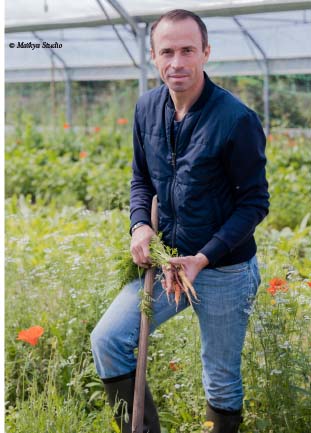
RELAIS DE CHAMBORD
Relais de Chambord sits on palace grounds near the castle within what used to be a farmhouse and stables, in the 19th century. The 55-room hotel is a Small Luxury Hotels of the World affiliate, which prestigious French architect, Michel Wilmotte, recently upgraded. Our light-filled corner room viewed the extraordinary castle; there were similar views from the unique barge called La Toue du Relais, a suite-boat moored in the Cosson River, and the barrel-shaped hot tub on the spa terrace! At Le Grand Saint Michel restaurant, we sipped Château de Chambord wine by the fire in the bar and ate Loire Valley comfort food in the country house-inspired dining room: an amuse, foie gras plus pasta with truffles.
CHÂTEAU ROYAL DE BLOIS
The history of the Royal Chateau of Blois dates from King Louis XII who arranged to have the oldest part of the chateau constructed before he died in 1515 and his successor, King François I, who added the Renaissance wing with its unique open circular staircase. That addition accounts for the castle’s status as one of the most prestigious Renaissance monuments in France.
FLEUR DE LOIRE
On the other side of the river, Michelin two-star chef Christophe Hay lovingly transformed a former riverfront hospice which views the castle into Fleur de Loire, a 44-room and 12-suite hotel, which opened in mid-2022. The Relais & Chateaux affiliate is built within the original structure and features a contemporary décor in which the eco-dedicated Gault & Millau “Chef of the Year 2021” also houses his destination restaurant, Restaurant Christophe Hay, one of Les Grandes Tables du Monde and the Sisley Spa and swimming pool. Amour Blanc, his more casual venue, is located within his adjacent, newly built, stone and glass, riverfront building.
CHÂTEAU DE CHEVERNY
Château de Cheverny is privately owned and occupied by the same family for more than six centuries and houses treasures that include lovely antiques, such as a Louis XIV chest of drawers in the Boulle style and a 17th century Gobelin tapestry. Outside, there’s a maze, a vegetable garden, a tulip garden and kennel.
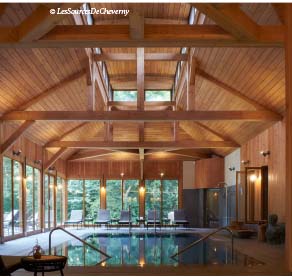
CHÂTEAU DE CHENONCEAU
Our final castle visit was to Château de Chenonceau, where we walked on the tree-bordered Grande Allée through the park and past trees planted in Versailles-like boxes. The interior is beautifully and authentically furnished in period décor and, because we happened to visit before a scheduled gala event, the table was set formally in the long gallery that Catherine de’ Medici added as a bridge across the Cher River.
CHÂTEAU D’ARTIGNY
I was on a mission to return to Château d’Artigny, where I had stayed with my late husband, in 1976, in the hotel that François Coty, the famed perfumer, had formerly built as his country estate. Though it was 25 miles beyond Chenonceau, I reserved a table for Sunday brunch before our late-day train trip via TGV that stopped directly at Charles de Gaulle (CDG) Airport. The station is located directly beneath the Sheraton Paris Airport Hotel, where we overnighted before flying back to the states, because the hotel’s front door opens into Terminal 2 and our gates!
A Caveat: Château d’Artigny plans to close at the end of 2025, for a total renovation and is scheduled to reopen in 2027. That’s reason enough to plan my next trip to the Loire!
For more information, please visit loirevalley-france.co.uk and raileurope.com
Irvina Lew awaits publication of her forthcoming book Forays in France: A FLAVORFUL MEMOIR.






